The Laboratory for Stable Isotope Analysis is a scientific-technical facility located within the Thünen Institute of Climate-Smart Agriculture.
For the analysis of air, water, soil and plant material at natural and enriched abundance level, the laboratory currently has four isotope ratio mass spectrometers (IRMS) with different peripherals from Thermo Fisher Scientific and three laser-based isotope analyzers with cavity ring-down spectroscopy (CRDS) from Picarro. We also analyse the origin of wood and fish samples in close cooperation with other Thünen Institutes (Forest Genetics, Fisheries Ecology).
Isotopenverhältnis-Massenspektrometrie
We use the following combinations of peripheral devices and IRMS to analyse solids for δ13C, δ15N, δ34S, δ18O and δ2H/δD isotope abundances:
EA - IRMS
We determine C and N isotopic abundances (δ13C, δ15N) at natural and enriched abundance level in organic and inorganic solid samples by elemental analysis (EA) coupled with IRMS. We can also determine C, N concentrations simultaneously. Another EA with a modified separation column is available for the analysis of S isotope abundance (δ34S) and S concentrations in solid samples.
TC/EA - IRMS
We simultaneously determine H/D and O isotopic abundances (δ2H/δD, δ18O) at natural and enriched abundance level and H and O concentrations in organic and inorganic solid samples by pyrolysis using a TC/EA-IRMS coupling. H/D and O concentrations can also be determined simultaneously.
We use the following combinations of peripheral devices and IRMS to analyse gaseous samples of δ15N and δ13C isotopic abundances:
PreCon - TraceGC - IRMS
We determine N-isotope abundance (δ15N im N2O) in gaseous samples at natural and enriched abundance range. The trace gas N2O is concentrated in the PreCon and separated by a gas chromatograph (GC). This allows the determination of position-specific isotope signatures (SP) in the N2O molecule.
Gasbench - IRMS
We simultaneously determine N isotopic abundances (δ15N im N2O und N2) in gaseous samples in the enriched abundance range. Using a modified Gasbench II (Lewicka et al. 2013) the isotopic abundances of δ15N in N2O+N2, δ15N in N2O and δ15N in N2 can be measured from a gaseous sample.
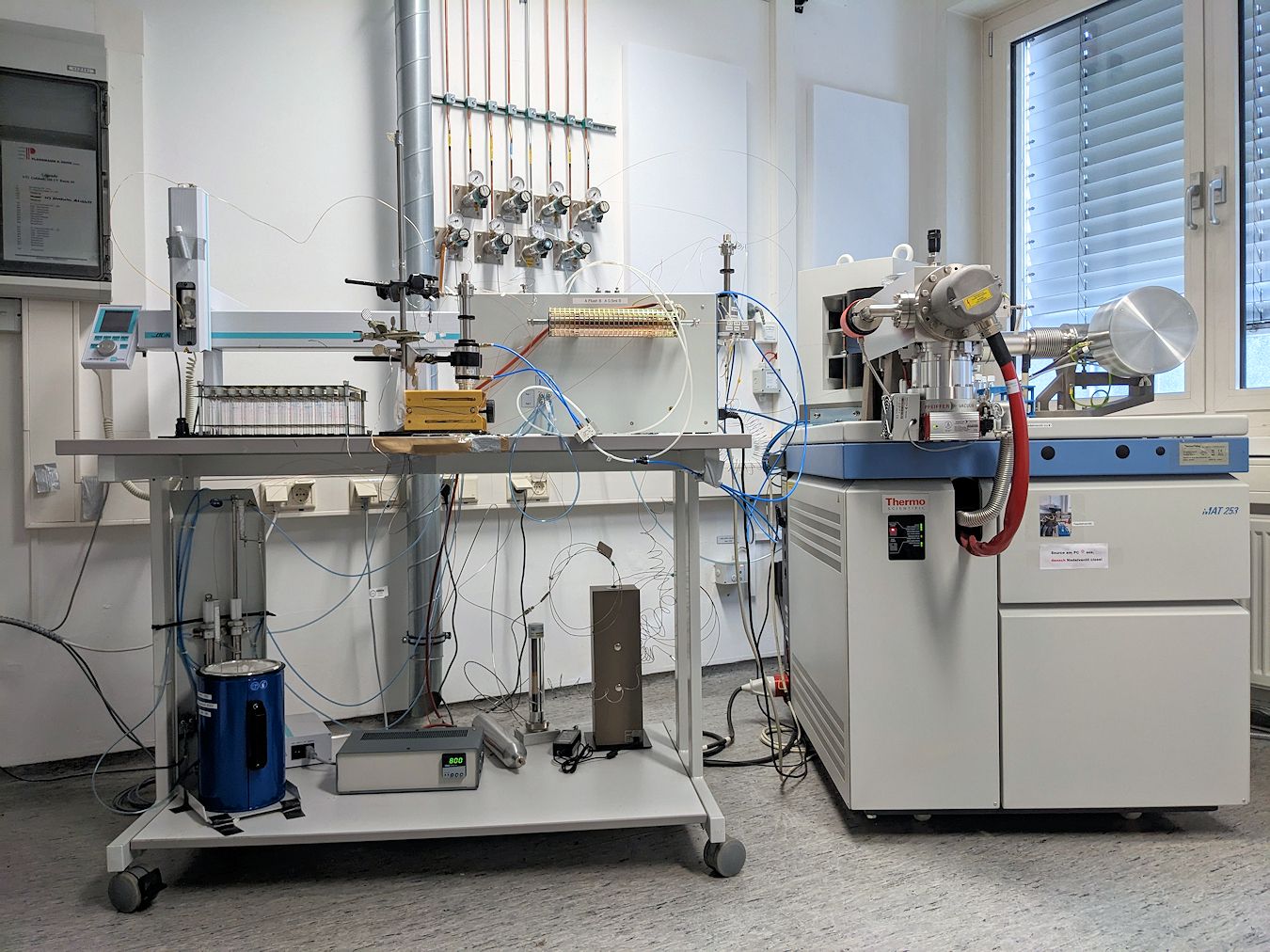
GC Box - IRMS
We determine C isotope abundance (δ13C in CO2) in gaseous samples at natural and enriched abundance level. A gas chromatograph (CG) separates the trace gas CO2 and the IRMS subsequently analyses it.
Laser-based isotope analyzers
We use the following CRDS system to analyse liquid samples of δ18O and δ2H/δD isotope abundances: Picarro L1115-i
We simultaneously determine H/D and O isotope abundances (δ2H/δD, δ18O) in the natural and enriched abundance range and H and O concentrations in aqueous samples, e.g. soil water.
We use the following CRDS system to analyse gaseous samples of δ13C isotopic abundance in CO2: Picarro G 1101-i
We determine C isotopic abundance (δ13C in CO2) in gaseous samples in the natural and enriched abundance range. A possible direct coupling with the microcosm facility (link MKA) allows continuous analysis of the δ13C isotopic abundance in CO2 emissions from a soil.
We use the following CRDS system to analyse gaseous samples of δ15N isotopic abundance in N2O: Picarro G5131-i
We determine position-specific N isotopic abundance (δ15N in N2O) in gaseous samples in the natural abundance range. This instrument is mainly used in the field.

![[Translate to English:] [Translate to English:]](/media/_processed_/6/4/csm_titel_CO2Kampagne8_afeea2273e.png)
![[Translate to English:] [Translate to English:]](/media/_processed_/4/1/csm_titel_93px_CO2Kampagne8_9b0f3354d4.png)
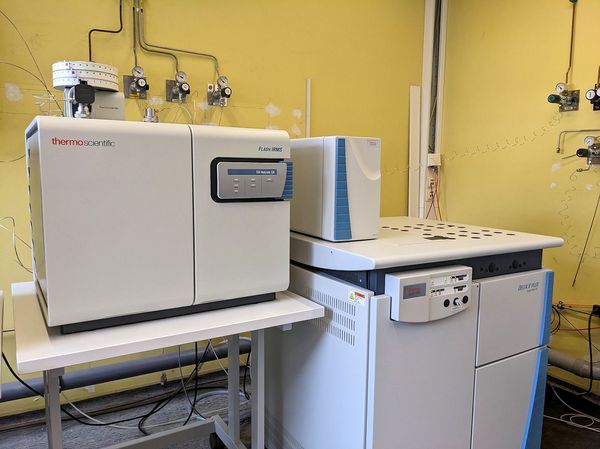
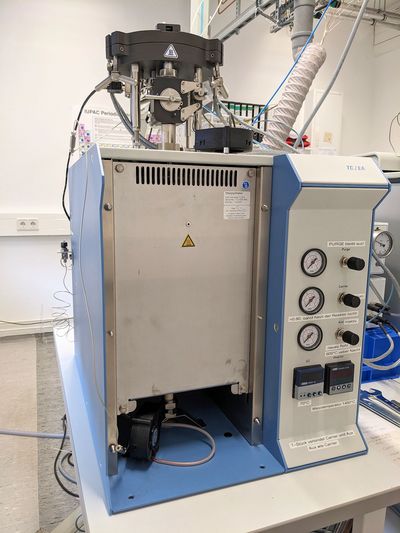
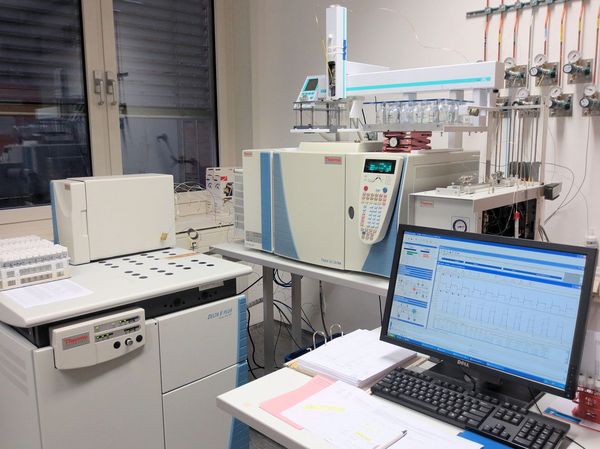
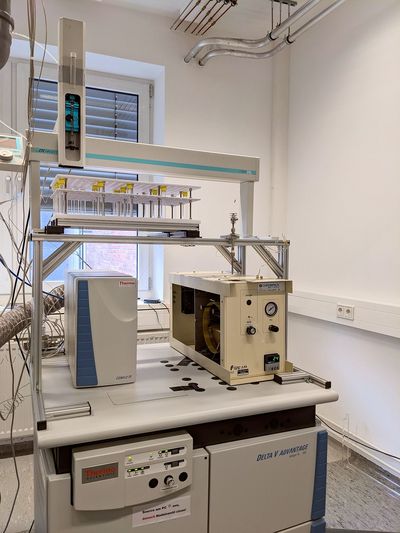
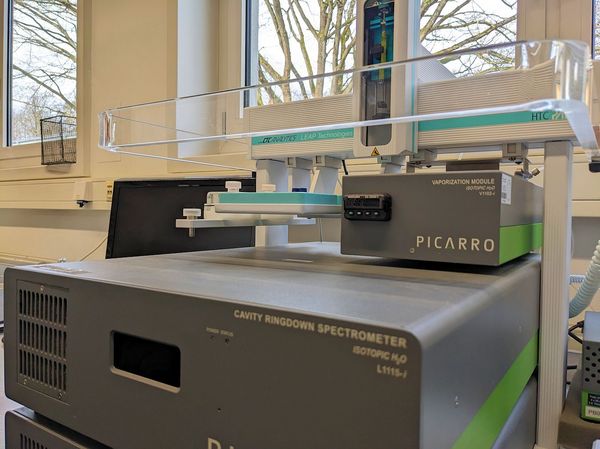
![[Translate to English:] Logo des Bundesministerium für Ernährung und Landwirtschaft](/media/allgemein/logos/BMEL_Logo.svg)